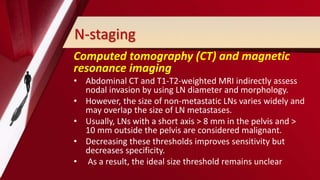This document discusses prostate cancer epidemiology, etiology, and diagnostic evaluation. It notes that prostate cancer is the second most commonly diagnosed cancer in men worldwide, with incidence varying widely between regions. Family history and genetics play a role in prostate cancer risk. Screening remains controversial, with initial widespread PSA screening in the US associated with decreased mortality, though over-diagnosis is a concern. Guidelines now suggest informing men aged 55-69 of PSA screening benefits and risks.










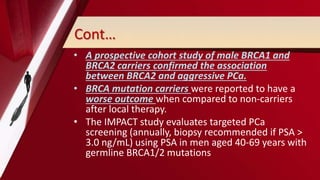































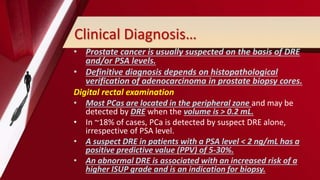




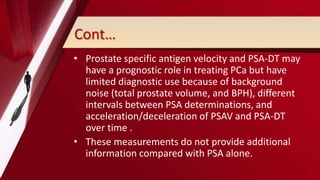



![Cont…
• The SelectMDX test is similarly based on mRNA biomarker
isolation from urine. The presence of HOXC6 and DLX1 mRNA
levels is assessed to provide an estimate of the risk of both
presence of PCa on biopsy as well as presence of high-risk
cancer.
• TMPRSS2-ERG fusion, a fusion of the trans-membrane
protease serine 2 (TMPRSS2) and the ERG gene can be
detected in 50% of PCas.
• When detection of TMPRSS2-ERG in urine was added to
PCA3 expression and serum PSA (Mi(chigan)Prostate Score
[MiPS]), cancer prediction improved.](https://image.slidesharecdn.com/prostatecancereauguidelines-220810145558-c608bbc8/85/Prostate-Cancer-EAU-Guidelines-pptx-52-320.jpg)




![Baseline Biopsy
• The need for prostate biopsy is based on PSA level and/or
suspicious DRE and/or imaging.
• Age, potential comorbidity, and therapeutic consequences should
also be considered and discussed beforehand.
• Risk stratification is a potential tool for reducing unnecessary
biopsies.
• Limited PSA elevation alone should not prompt immediate biopsy.
• Prostate specific antigen level should be verified after a few weeks,
in the same laboratory, using the same assay under standardised
conditions (i.e. no ejaculation, manipulations, and urinary tract
infections [UTIs]).
• Empiric use of antibiotics in an asymptomatic patient in order to
lower the PSA should not be undertaken.](https://image.slidesharecdn.com/prostatecancereauguidelines-220810145558-c608bbc8/85/Prostate-Cancer-EAU-Guidelines-pptx-57-320.jpg)
















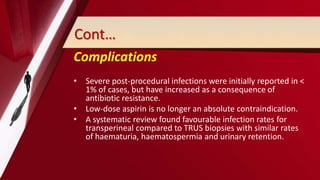


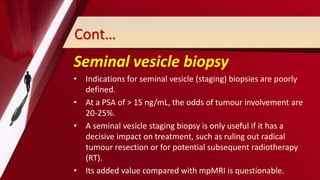
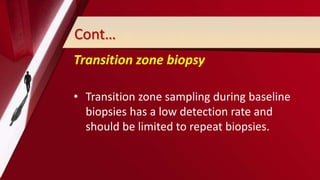


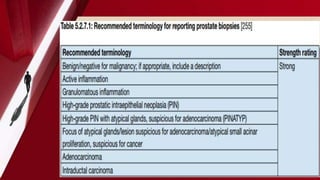

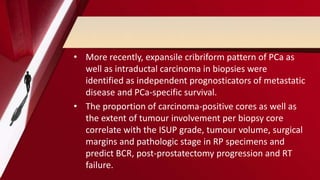




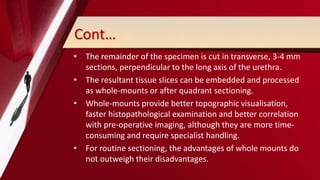

















![Cont…
• Multiparametric MRI, although not perfect for local staging,
may improve the prediction of the pathological stage when
combined with clinical data.
• Other MRI-derived parameters such as the tumour volume
or the contact length of the tumour with the capsule, or the
ISUP grade obtained through MRI-TBx [303] could further
improve the local staging.
• Given its low sensitivity for focal (microscopic) EPE, mpMRI is
not recommended for local staging in low-risk patients.
• However, mpMRI can still be useful for treatment planning.](https://image.slidesharecdn.com/prostatecancereauguidelines-220810145558-c608bbc8/85/Prostate-Cancer-EAU-Guidelines-pptx-106-320.jpg)
